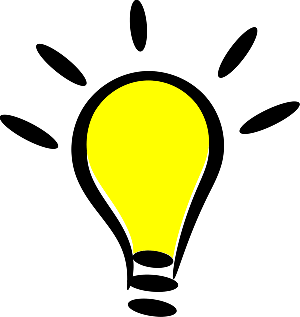If you're looking for pro tips for webinar hosts to take your presentation game to the next level, you've come to the right place!
When it comes to hosting webinars, there is a lot more to it than just delivering content.
Hosts need to know how to engage their audiences, what questions to anticipate and many other best practices that are necessary to make your hosting experience a success.
Studies show that 20-40% of participants turn into qualified leads, but only if you can check all the boxes above.
In this article you'll learn 9 tips for webinar hosts used by the pros day in and day out so you can create an outstanding experience for your audience.
Disclosure: Although I receive affiliate compensation at no additional cost to you to support this site that compensation in no way influences my recommendations, which are strictly informed by my 10+ years of online business experience consulting for clients large and small. My aim is to always recommend tools that offer the best return for your investment (for more details, read my Affiliate Disclosure).
9 Tips for Webinar Hosts to Fully Engage Your Audience
Some strategies can move the needle faster than others. Here’s a list of best tips for webinar hosts to turbo-charge your delivery:
1. Create an eye-catching webinar title
You never get a second chance to make a first impression. A dull title can make the best webinar be perceived as boring in the eyes of your audience.
Your webinar title and subtitle are key elements in your marketing mix and must be created to be compelling.
This is no different than the title and sub-title of a nonfiction book. The success or failure in the promotion of your webinar will hinge on whether you nail this piece or not.
So, how do you go about it creating a killer title?
By knowing your target audience’s main pain-point — which your title will address — and how your unique solution will address it, which your sub-title will.
I’ll give you a good example with a bestseller book I’m sure you’ve heard about before.
The 4-Hour Workweek by Tim Ferriss wasn’t a great success because it’s title reflected the content of the book (in fact, it doesn't at all), but because it reflected the main paint point of it’s target audience: people in the rat race wanting to get out.
Rat racers dream of the day they can leave it behind while generating the same income to sustain their current lifestyle, and Tim Ferriss knows this fact well.
If his title had focused on the strategies in his book, it wouldn’t have gotten nearly as far as it got in popularity, because it would have erroneously focused on the solution instead of the problem.
So, when it comes to creating an eye-catching title for your webinar, learn this key lesson: your title has to be about your audience and not about your product or service.
More specifically, it needs to address their main point-point while providing an aspirational release from it.
The “4 Hour Work Week” does just that. It doesn’t tell you how you’re going to get out of the rat race, it simply reflects the it pain caused on its audience while painting an aspirational outcome.
In other words, phrase your webinar title as a hook (without revealing how you’re going to get there) — if you want to find out then you'll have to attend!
2. Include visuals in the webinar presentation

The key of a successful webinar is not the information you’re presenting, but how you’re presenting it.
If all you do is to show text-heavy slide after slide while you read off them, you’ll likely have a poorly attended webinar.
If, on the other hand, you intersperse a lot of visuals that capture the essence of the different sections of your content, while expanding on it with your narration, then you’ll end up with a much more engaged audience.
A chart tells a story, and as the narrator, your job is to add color and commentary. People love visuals because our brains are trained to learn through imagery and spatial placement.
Learning to drive a car by reading about it first won’t be nearly as effective as sitting in a car while an instructor (the narrator) describes the images that flash in front of your eyes (the visuals) and how they relate to one another.
So, when you have a script for your webinar ready and are creating your slide deck to go with it, make sure to intersperse visuals that capture and expand on the content of your bulleted text.
3. Provide webinar handouts or other resources
The great thing about webinars is that you can supply your audience with a great deal of downloadable materials at the end so they don’t need to take notes and can be fully present during your delivery.
All popular webinar hosting platforms will provide you with the ability to offer downloadable links that appear at a predetermined time, so that your audience can download things like your slide deck, class notes, checklists, spreadsheets, and other types of instructional materials.
In fact, the promise of such materials is a very effective technique to keep your audience involved through to the end of your event.
This technique works like a charm and you should definitely consider taking advantage of it.
4. Make sure you show a clear call to action at the end of the webinar

When you’re nearing the end of your presentation, make sure to have a clear call to action appear at a predetermined time, to coincide with your mention of an offer in the webinar’s timeline.
The reason all popular webinar hosting software offer time-based call to action buttons, is that you need to build up to your offer over time. If you show your call to action from the beginning, people will likely react negatively because they are not psychologically prepared to see it.
So, take advantage of the time-based content release to present a well-timed call to action to make sure that your webinar captures motivated leads and their contact information.
Now, if your call to action is not clear, say, you’re using a plain link with no imagery associated with it, then your uptake will be very low. So, make sure that you choose colors and imagery that stand out.
5. Include a pre-webinar video
To add context to your upcoming webinar and increase attendance rates, make sure to tease out your webinar with a pre-recorded pre-webinar video to autoplay right after your audience members fill out your registration form.
In this pre-recorded video, you want to have either your webinar presenter or even an MC explain what the webinar is about and the main benefits for attending it, addressing the main pain point of your audience without revealing any of your secrets.
This pre-webinar video is like the back copy of a book. It’s a teaser that sets up the book for purchase. This is the marketing copy that’s carefully crafted to entice potential readers to buy it.
A webinar without this teaser content is akin to a book without back-cover text, so make sure you invest some production time to create a 1-3 minute mini video for this purpose.
6. Send reminders before the webinar starts
All popular webinar hosting platforms will offer reminder settings so that you can send personalized emails to your registrants at predetermined times.
The most typical time frame are:
- Right after registration to thank your registrant
- The day before the event, if applicable
- One hour before the event
- 15 minutes before the event
- On start
Also, the same drip system can send followup emails thanking the attendees for their time, plus any other post-webinar touch points you deem necessary for your marketing efforts, including a link to replay the webinar at a later time.
7. Offer a Q&A at the end of the webinar presentation

Webinars are perfect vehicles for answering your audience's questions via chat, so make sure you allocate sufficient time in your webcast to accommodate the answers.
Ideally, make sure to allocate at least 30% of your webinar time to your Q&A section.
If your audience is highly engaged, you may need to allocate even more, like 40% and 50%, which, although less common, is not unheard of.
In fact, the more engaged your audience is during your Q&A, the higher the chances they’ll respond positively to your calls to action!
8. Record your webinar
Although this is a common feature in webinar hosting software, make sure you always record your live webinars for replay at a later time.
Your most engaged attendees will want to watch the replay, and those registrants that for one reason or another weren’t able to attend live, will likely not want to miss out either.
Make sure to send follow-up reminders to all registrants when your webinar replay becomes available.
Depending on your platform and the length of your webinar, it could take anywhere from 30 minutes to several hours after the end of your broadcast for the recorded version to become available for a reply.
9. Offer something in return for attending your webinar
Last but not least, make sure to make free offers for bonus content available for download at the end of your webinar as a reward for sticking around.
This is different from class notes or your slide deck. I’m talking about enticing bonus materials that you’ll heavily pitch during the promotion phase of your webinar.
This could be in the form of a free eBook, a great workbook, or something low in cost for you but of high value to your audience.
Bonus materials are a great promotional hook for webinar attendance.
What Makes a Good Webinar Presenter?
Building rapport is often the most important part of a webinar presentation to get your audience invested and engaged; it's helpful to establish your authenticity and trust from the very beginning.
Start off by explaining why you’re qualified for the topic at hand and what you hope to achieve. Also, make sure to thank your audience for joining in the first few minutes of your webinar.
Speak in a conversational tone and ask close-ended questions when appropriate to help keep them engaged.
How Do I Make My Webinar Stand Out?
- Make the presentation about your audience, not the presenter
- Have a clear purpose in mind
- Get to know your customers on a personal level; engage them with questions, surveys and live polls
- Offer something of value upfront
- Tailor your presentation to solving your audience’s pain points, but avoid being too salesy or too technical
- Make it both visual and listenable with interesting charts and graphics
How Do You Structure a Webinar?
Begin with a short introductory greeting. This might include welcoming attendees by name as they appear on the chat box. Follow up with an introduction into the webinar with or without visual aids.
Next, deliver the bulk of your presentation with a mix of slides with speaker narration, a panel discussion, or pre-recorded video clips.
Then, summarize your presentation for the audience, solicit questions and close with a call to action for next steps. This could be a paid product offer, free consulting sessions, etc.
Finally, thank anyone in attendance and encourage them to get in touch after the webinar.
What Improvements Are Required to Make the Webinar More Effective?
- Have an introduction that clearly lists your webinar's objectives
- Make sure you have a strong opening with good examples about why people should be interested in your topic
- Show your ideas with bullet points and elaborate in spoken form; never read directly off the slides
- Include plenty of visuals
What Do You Wear to a Webinar?
It's important to dress in relation to the average age of your audience and the type of subject you’re covering.
Older people expect more formality (e.g. if you’re providing investment advice). Younger audiences expect more casual wear (e.g. online marketing advice).
In all cases, avoid wearing clothes with distracting patterns that could interfere with the video signal or clothing that’s visibly wrinkled.
How Do I Introduce a Speaker to a Webinar?
When introducing your speaker, begin by mentioning their name followed by a brief biography, the topic of their presentation, how your audience will benefit from their expertise and anything else that gives context on the individual who’ll be speaking.
How Do I End a Webinar Session?
Begin by thanking your audience for attending the session. Next, make sure to provide your contact information and entice them to get in touch after the webinar. Finally, provide access to any bonus content or materials that you’ve promised as part of your webinar promotion.
What Should You Do After the Webinar is Over?
First, thank your participants for attending. This is not just a simple courtesy — taking the time to express your appreciation is a necessary first step to begin nurturing a long-term relationship with your attendees.
Second, provide a recording of the webinar. Many people might have been unable to attend the live event due to scheduling conflicts, so providing them with a recording will ensure that they can still benefit from your content.
Finally, follow up with your participants after the initial thank-you email. Ask for feedback to see if there are any questions that still need an answer and keep providing them with valuable content through a drip email campaign.
By taking these steps, you’ll ensure that your webinars have coattails.
Wrapping Things Up
Now you know the 9 best tips for webinar hosts that'll help you become a successful presenter.
If you’d like to learn about some good business use cases for webinars, read this article on 7 Reasons Why You Should Host A Webinar







